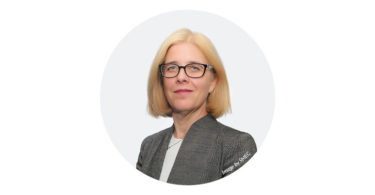Trained as a geographer and historian, Serge Jardin calls himself a memory smuggler and, for the past 30 years, a Malaysia lover.
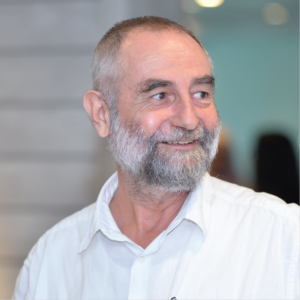 Born in 1954 in a small village of the French countryside, he obtained his master’s degree from the University of Paris in 1977. After two years as a teacher, he began travelling extensively around the world for the next five years and encountered the tourism industry.
Born in 1954 in a small village of the French countryside, he obtained his master’s degree from the University of Paris in 1977. After two years as a teacher, he began travelling extensively around the world for the next five years and encountered the tourism industry.
Arriving in Malaysia in 1986, Jardin worked as a tour leader and tourist guide. In 1988, he incorporated his own travel agency specialising in the French and ‘incentive’ market. He married a Melakan and moved to his wife’s town in 2004. They run a bed-and-breakfast in an old townhouse, The Snail House, which they restored.
Jardin has authored several books, including “Rêver Malacca”, an invitation to discover Melaka through the eyes of travellers; “Malaisie, uncertain regard”, a collaboration with Sylvie Gradeler on Malaysia, as seen through arts, crafts and literature; and “Malacca Style”, with photographer Tham Ze Hoe.
What were your first impressions of Malaysia and Melaka?
Arriving in January 1986, on the West Coast, it was the colours, the bright blue sky, the deep green of the plantation and the red lateritic earth. On the
East Coast, it was the call of the bilal, the rain and the flood. I understood immediately why the houses were on stilts (sadly discarded today), a feature that contributed so much to the elegance of the Malay house.
The diversity of the population—from the Malay kampung to the Iban longhouse, from the plantations to the fishing villages—and the quality of the people are most probably my first and most lasting impression of Malaysia until today.
I knew when I first saw Melaka that I would return. It was love at first sight with the sleepy hollow—forgotten guns and bounded feet, Maritime Silk Road and Spice Road, a roofless church, the eclectic style of the Straits Chinese house, the distinctively Melaka-styled mosque, the staircase of the Malay house, the Baba, Chitty, Jawi, Serani.
As a historian and tour guide, you have been emphasising the need for local identity in interior design, notably in Melaka. Why do you think it is so important?
Interior architectural design contributes to forging the identity of a place.
Since the beginning of history, buildings and their interiors are associated with climatic conditions, materials available and political ideology, just to name a few. What will Athena be without Acropolis, Versailles without the palaces, Manhattan without skyscrapers? What about Melaka? Looking for Melaka’s interior design identity is a challenge!
Let’s unfold the eventful history of Melaka, a port-entrepôt. It was founded by a Malay prince of Hindu religion, but it is neither Malay nor a Hindu town. Later, Islam came and the Chinese visited, but it is not an Islamic or a Chinese town. Conquered successively by three Europeans powers (namely Portuguese, Dutch and British), but it is not a European town. For a short while, it was under Japanese masters before the birth of a new nation. What can we make of so many historical layers? So many communities contributed to give birth to such a rich cultural tapestry. The result is a medley of architecture and interior design that begets a question: What is Melaka?
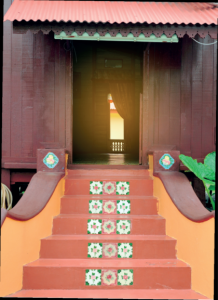
What is the current design scenario like in Melaka?
The tourism industry should be at the forefront to develop a cultural identity, but sadly many mushrooming hotels in and around the old town often have indistinguishable interior design. Lobbies of hotels are under postmodern attack and totally devoid of character. It is also not uncommon to find irrelevant interior decorations, such as figurines of the Moai from Easter Island or a naked Tibetan deity.
There are strong influences of both Americanisation and Islamisation— strange bedfellows anywhere else, but not in Malaysia. For example, right in the heart of the UNESCO world heritage site stands a large ornate electric guitar—courtesy of Hard Rock Café. There’s the Straits Mosque, with its Middle Eastern dome, on Pulau Melaka, while the Arabic mashrabiya windows are everywhere to be seen.
We shouldn’t blindly follow styles—whether international, tropical or vernacular—as these lead to the destruction and reduction of identity.
Interior design is not static but dynamic and in constant progression, creating identity along the way. It is necessary to understand the past to be able to reinterpret it with contemporary elements.
In contrast, the Kampung Kling Mosque is as an illustration of the kuih lapis (or mille feuille) that is Melaka. Decorated with Chinese calligraphy and lotus flowers, it is roofed with French Marseille tiles, covered by an Indian pyramid roof (Mahameru), decorated with Victorian tiles made in Japan, supported by European neo-classical columns and capitals (Ionic and Corinthian order), surrounded with English cast iron railing and columns, and decorated with Malay wood carving. It is neither a Middle-East, a Mogul, a Persian nor a Turkish mosque, but a distinctively Melaka mosque.
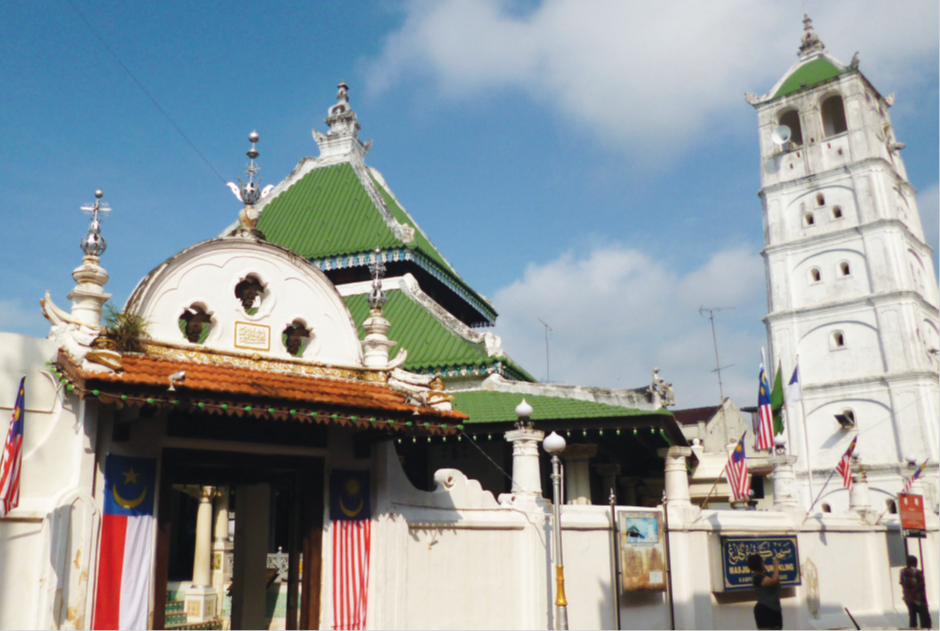
Would you consider globalisation a threat to local identity in interior design?
Globalisation is a great threat to so many diverse and rich cultures. Early decorations were mostly functional with strong political and religious influences. From the 20th century, the development of ‘international style’ has considerably reduced regional variety.
However, I would also say no to vernacular interior design per se. Climate, culture or craft cannot be reduced to indigenous designs that just overlap each other. It is common to see former structural elements (such as bamboo, iron or wood) now used merely as decorative elements—anchor wall, corbels, strap hinges—or wrongly replaced, for lack of knowledge or money.
Even tropical interior design—the so-called ‘South East Asian style’, which flourishes from Bali to Phuket—may not have a place in our local context. Bali is Hindu, Phuket is Buddhist, and Terengganu is Muslim. Frangipani doesn’t have the same meaning everywhere. There are no volcanoes in Melaka, so no lava stone to be carved, but we do have lateritic stone. In Melaka, naked Tibetan deities are as alien as the Hello Kitty on the streets or the Rialto Bridge lookalike across the Melaka River.
We shouldn’t blindly follow styles—whether international, tropical or vernacular—as these lead to the destruction and reduction of identity. Interior design must be seen for what it is: a production process, a reflection of the society and a cultural product.
How then should we move forward in the context of Melaka?
To solve the apparent contradiction or paradox of the times we are in, it is necessary to aboard interior design critically.
For example, the relation with nature (e.g., climate and light) is more important than formal traditional design. In Melaka, it is an absolute necessity to tame the violence of rain and sun! Adaptation to topography and climate is an obvious choice, but ethnical, historical and political criteria should not be neglected.
It should be a priority to limit the effects of globalisation by using local particularities. In old Melaka, the difference between the ubiquitous shop houses and Rumah Baba Melaka should be preserved, particularly the ceramic fresco, painting and stucco, floor and decorative tiles, columns and capital, and wood carving and panels.
The difficulty to define an interior design identity for Melaka may be due to too many influences and too many layers, as we have seen. And too many is as good as none. Maybe it is this absence of identity that can now be the best catalyst to create and to invent.
Interior design is not static but dynamic and in constant progression, creating identity along the way. It is necessary to understand the past to be able to reinterpret it with contemporary elements. Hence, the cohabitation of new materials (such as aluminium, concrete and glass) and traditional forms is a non-issue. We should not try to replicate what was done, but we must understand the soul of it to be able to create new interior design. By rooting style in the local context, a new local identity will emerge.
Interior designers should work with craftsmen—you have the creativity, and they have the skills—to rethink and revitalise traditional and, too often, disappearing crafts. We should use textile (batik, ikat and songket) in interior design, adapt Chinese traditional lanterns for modern housing, revive decorative tiles, redesign rattan furniture, reuse woodcarving, etc … that’s the way forward.
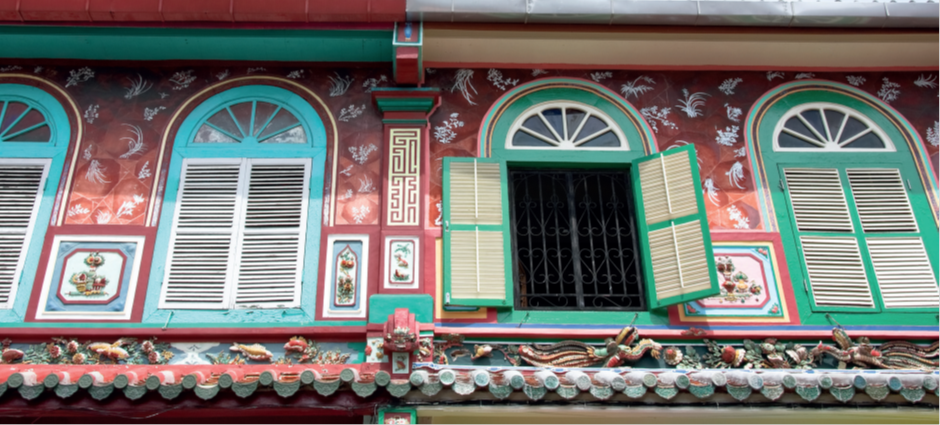
What are some recent efforts and developments in Melaka that display and promote local identity?
As Melaka is slowly but surely discovering its heritage, we shall see more and more fortunate initiatives in the future, such as the reinterpretion of the shop house at Bites, with iron, glass and laterite; the transformation of an old metallic warehouse into a hotel at Quayside; the rehabilitation of an old colonial bungalow at Macau Gallery on Bukit Peringgit; and the replacement of an old metallic sliding door in the Melaka context at SALUD Tapas Bar & Restaurant.
Along the former Heeren Street, where the wealthy Chinese merchants used to live, some of the unique Straits Chinese houses are going through a process of restoration and reuse. You can now find art galleries (Tham Siew
Inn Artist Gallery at number 49 and Kim’s Fine Art House at number 140); school (Tun Tan Cheng Lock Centre at numbers 54 and 56); antique shop (Malaqa House Museum at number 70); café (The Baboon House at number 89); hotel (Courtyard @ Heeren Boutique Hotel at number 91); and private residences.

 Hong Kong
Hong Kong Singapore
Singapore Indonesia
Indonesia Tiếng Việt
Tiếng Việt ประเทศไทย
ประเทศไทย





